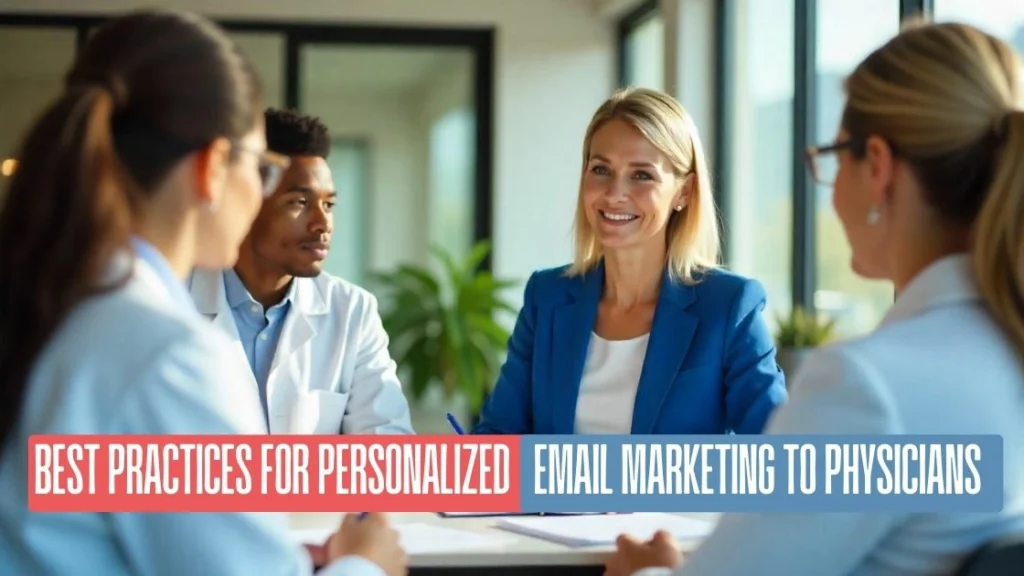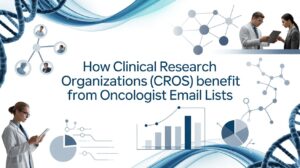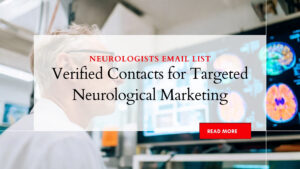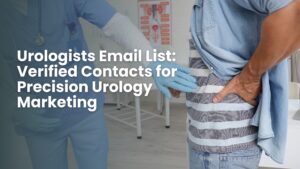In today’s highly digitalized healthcare environment, standing out in physicians’ inboxes is a challenging task. With daily volumes of messages flooding their email accounts, it’s more important than ever to provide targeted, relevant content. Personalized email marketing has emerged as a powerful way to engage physicians, offering a means to connect meaningfully with this audience. By tailoring messages to fit physicians’ specific needs, interests, and specialties, marketers can cut through the clutter and create value-driven connections. In this guide, we explore best practices for crafting personalized email campaigns that not only capture attention but also foster long-term relationships with healthcare professionals.
Why Personalized Email Marketing Matters for Physicians?
Personalized email marketing is a fundamental strategy when it comes to connecting with physicians. Here are some of the key reasons why this approach is crucial:
- Drives Higher Engagement: Personalized content tailored to a physician’s specialty or interests increases the likelihood of email opens and click-throughs.
- Establishes Professional Trust: Providing relevant and valuable information helps build trust with physicians, positioning your brand as a credible resource.
- Ensures Content Relevance: Personalization guarantees that your emails are tailored to the physician’s unique needs, keeping content highly relevant.
- Supports Improved Patient Outcomes: By sharing timely medical updates and best practices, personalized emails contribute to better healthcare delivery.
1. Categorize Your Audience for Precision Outreach
To build an effective personalized email strategy, start by segmenting your physician audience based on specific factors. Segmentation allows you to tailor content for each group’s unique needs and preferences. Here are some key ways to categorize your audience:
- Medical Specialty: Tailor messages to specific fields such as cardiology, dermatology, orthopedics, and more.
- Practice Environment: Segment physicians based on whether they work in private practice, academic institutions, or hospital settings.
- Career Stage: Tailor emails to residents, mid-career professionals, and senior practitioners, each of whom has distinct information needs.
- Geographic Location: Customize content based on the region, as local events, regulations, and news may be of particular interest.
- Professional Interests: Consider research interests or areas of focus, such as clinical trials or new technologies.
2. Craft Subject Lines That Physicians Will Open
Subject lines are your first and most critical opportunity to grab a physician’s attention. Here are some key strategies for creating engaging subject lines:
Focus on Value and Relevance: Make the purpose of the email clear and highlight its benefits.
- Keep It Concise and Impactful: Limit your subject line to 6-10 words for clarity and ease of reading.
- Incorporate Personalization: Include the recipient’s name or specialty to make the subject line feel more tailored and relevant.
- Create a Sense of Urgency or Importance: Use subject lines that emphasize timely or critical information, such as “Action Needed: Compliance Update Inside.”
3. Share Content That Earns Their Attention
Physicians are busy and selective about what they engage with. To ensure your emails offer value, focus on these types of content:
- Relevant Research and Findings: Share key studies or breakthroughs related to their specialty.
- Success Stories and Case Studies: Offer real-world examples that show how your product or service has benefited peers.
- Medical Trends and Analysis: Provide insights into emerging trends in their field, such as the latest treatment innovations.
- Continuing Education Opportunities: Invite physicians to accredited webinars, CME programs, or conferences.
- Tools and Resources: Offer practical guides, eBooks, or checklists that provide immediate value.
4. Time It Right—When and How Often to Email
Sending too many emails can overwhelm your audience, while sending too few may result in missed opportunities. To find the ideal balance, consider the following:
- Optimal Sending Times: Aim to send emails when physicians are most likely to check their inboxes, such as early morning or during lunch hours.
- Adjust Frequency Based on Engagement: Use performance data to determine the right amount of communication for each segment.
- Let Recipients Control Frequency: Allow physicians to choose how often they’d like to receive emails to avoid overwhelming them.
- Send on Specific Days: Studies show that emails sent on Tuesdays and Thursdays tend to have higher open rates, with the best times around 10 AM or 2 PM.
5. Use Smart Data for Smarter Messaging
Harness the power of data and artificial intelligence (AI) to deliver more relevant and engaging content. Here’s how you can leverage data-driven personalization:
- Behavioral Analytics: Track how physicians engage with your emails to predict future interests and tailor your content accordingly.
- AI-Driven Recommendations: Use AI to suggest resources, such as new treatments or drugs, based on their past interactions or prescriptions.
- Dynamic Content: Personalize email content based on the recipient’s specific preferences, ensuring that they see the most relevant information.
- Predictive Messaging: For example, a pharmaceutical company could use AI to send content about a new drug relevant to a physician’s prescribing habits.
6. Design with Mobility in Mind
Given that many physicians access emails via smartphones, mobile optimization is key to ensuring your message is read. Focus on:
- Responsive Design: Ensure your emails adapt to various screen sizes and devices.
- Simplified Layouts: Avoid complex designs and stick to a single-column format to make reading easier on mobile.
- Large, Clickable Buttons: Make calls-to-action (CTAs) easy to tap with larger buttons and clear instructions.
- Optimized Images: Use compressed images for fast loading times on mobile devices.
7. Guide Action with a Focused CTA
Every email should have a clear call to action (CTA). Here’s how to craft a compelling CTA:
- Action-Oriented Language: Use strong, clear phrases like “Register Today” or “Download the Whitepaper.”
- Make CTAs Stand Out Visually: Ensure that your CTA buttons are prominent and easy to click.
- Limit CTAs Per Email: Fewer CTAs can help focus the physician’s attention on a single action.
- A/B Test for Better Results: Experiment with different CTA designs and placements to see what works best for your audience.
8. Tackle Challenges Before They Derail Results
Personalized email campaigns come with their own set of challenges. Here’s how to avoid common pitfalls:
- Low Open Rates: Regularly optimize subject lines and sending times based on performance data to improve open rates.
- Spam Filters: Authenticate your emails with protocols like SPF and DKIM to avoid being flagged as spam.
- Regulatory Compliance: Ensure that all emails comply with HIPAA and other regulations, avoiding the inclusion of protected health information (PHI) without consent.
9. Track Performance with the Right Metrics
To evaluate the effectiveness of your email campaigns, monitor these essential metrics:
- Open Rates: A good benchmark for healthcare email open rates is between 20-30%. Track these closely to measure subject line effectiveness.
- Click-Through Rates (CTR): This metric helps you gauge how well your content resonates with physicians.
- Conversion Rates: Track actions taken after clicking, such as event registrations or whitepaper downloads.
- Email Read Time: Measure how long recipients spend reading your emails to understand engagement.
- Unsubscribe Rates: Keep an eye on unsubscribe rates to ensure your emails are still relevant to your audience.
10. Get Ahead with Future-Forward Strategies
As the digital landscape evolves, here are some emerging trends you should consider for future email marketing efforts:
- AI-Driven Personalization: Use AI to scale personalization, optimizing content delivery based on individual preferences.
- Interactive Emails: Add elements like surveys or appointment scheduling directly within the email to increase interactivity and engagement.
- Voice-Optimized Content: With the growing use of voice assistants, consider how your emails might be consumed through voice-enabled devices.
- Real-Time Personalization: Tailor content dynamically based on a physician’s current needs or the latest data, ensuring they always receive the most relevant information.
Conclusion
Personalized email marketing is an invaluable tool for building strong, lasting relationships with physicians. It’s not just about promoting products or services—it’s about providing valuable, relevant content that enhances the physician’s practice and contributes to improved patient care. By adopting these best practices, you’ll create email campaigns that not only stand out in crowded inboxes but also foster trust and engagement.
Remember, continuous optimization is key to success. Regularly analyze your campaigns’ performance, stay attuned to feedback, and adjust strategies as needed. With a thoughtful, data-driven approach to email marketing, you can build meaningful connections with physicians and position your brand as an essential resource in the healthcare industry.







